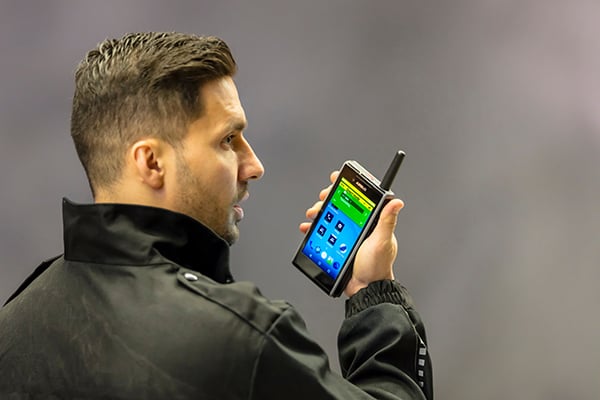Mobile broadband is clearly in the sights of many organizations using narrowband radio communications. They see mobile broadband as an effective way to achieve new levels of operational efficiency, safety and security. But what are the essential considerations every operator should think about when planning a broadband future?
Adopting a hybrid network with both narrow and broadband is a good route to success. To guide you along the way, we’ve come up with the top four essential topics, together with some helpful tools and resources.
1. Think about the users
Simply put - without applications, mobile broadband offers no additional value for users.
When planning a broadband future, keep in mind that it’s not just about the technology. Mobile broadband must help people work more effectively and mobile applications can help achieve exactly this. They offer innovative ways to protect citizens, while also helping organizations work more efficiently .
For example, first responders at an accident could send video and photographs from the scene, giving commanders at the control centre the information to make better decisions. Using reporting tools supported over broadband, police officers could spend more time helping people and less on paperwork at the police station. New applications can also simplify and automate existing procedures.

Avoid falling into the trap of getting new technology just for the sake of it.
2. Get users involved
If there is no involvement from users, they won’t be committed to the project.
Before planning the evolution to broadband, ensure that the users are involved. It’s also a good idea to take a detailed look at how user organizations work, as well as their critical communications needs. This will help you to define the requirements for the new service. It also ensures you don’t end up changing the way users do things because the solution won’t support the user organization’s current operations and processes. This could also cause disruption to users, making them unhappy - they may even reject the new solutions.
Of course, you will want the new service or application to bring new possibilities! The time for introducing these is when users are comfortable with the smaller changes, such as a new user device.

And this brings us to number three on the list of essentials…
3. Ensure service continuity
Adopting mobile broadband services is a great opportunity to offer more value for users. But it’s also vital that new technologies and solutions don’t hinder existing services. The safety of citizens and first responders must never be jeopardized. A police officer carrying a TETRA/Tetrapol radio must have reliable communications to support their demanding duties.

Standardized mobile broadband technologies cannot yet provide all the functions that mission-critical users need. For example, the new technologies cannot deliver a capability comparable to TETRA Direct Mode (DMO) for communications outside network coverage. This is one of the reasons why even the most forward-looking operators are planning to keep TETRA/Tetrapol services running for many years to come.
What’s more, it would not make sense to replace an existing well-serving critical communications network with an alternative that does not meet all your organization’s requirements. It would be better to evolve the current network and build a hybrid solution.
A hybrid solution enables gradual investments according to the evolving needs of users. Organizations can continue with TETRA or Tetrapol voice and data and introduce mobile broadband services step-by-step. Hybrid solutions can be developed to take advantage of both TETRA/Tetrapol and broadband capabilities, offering a wealth of new opportunities.
4. Set the right goals
Goals are good for setting a direction, but when planning your broadband future, avoid making them too ambitious.
Instead of replacing an existing TETRA/Tetrapol network that is working well with an alternative that does not meet all your requirements or performs badly, it is better to evolve the current network gradually towards mobile broadband.
--- Hand-picked content for you
This approach eliminates some key risks as described in the blog post "How a hybrid TETRA and broadband network helps you avoid risks".
---
When bringing new solutions into use, it’s always important to test they work in the organization’s operational environment before committing to major investments and binding schedules.
The good news is, the hybrid network model allows you to continue with a TETRA/Tetrapol network for critical voice and data and introduce mobile broadband services step-by-step. It’s a cost-effective and flexible method, as investments can be made gradually as needed.

Many public safety organizations are already on the hybrid path, in Belgium, Finland and Sweden, among others.
To build a hybrid solution, the critical communications operator may choose to use the mobile broadband services of a commercial mobile network operator (MNO). However, this option poses some challenges, such as how to ensure sufficient control and security and the needed service availability.
Learn about the smart solution to these challenges. Download the whitepaper "Why secure MVNO is your next smart move"
Take account of these issues and you’ll be well on your way to a hybrid network solution that works for you.
A helping hand for your network evolution
Are you planning to introduce mobile broadband and mobile applications but don't know where to start? Don't worry, there are 14 guides and videos that explain how to move towards the broadband future, the smart way:
14 great resources to help evolve your PMR network to broadband





